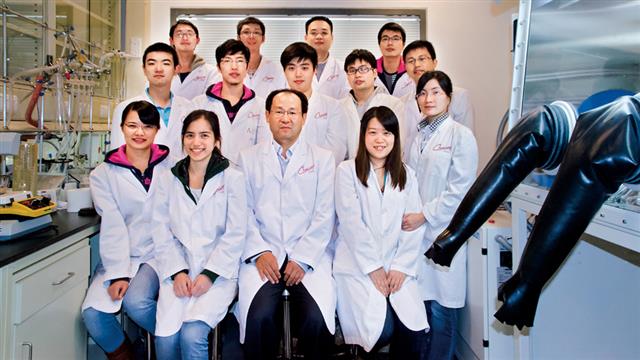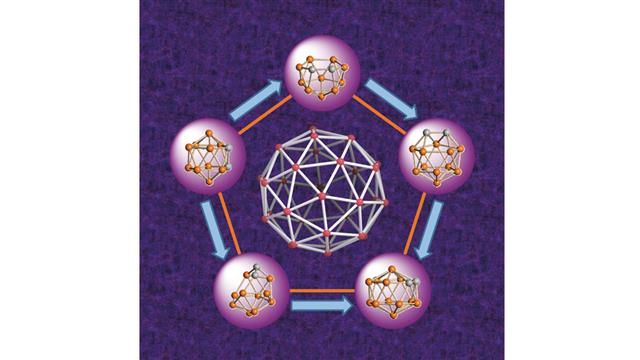Making the Impossible Possible
During one of the routine research group discussions in June 2002, Prof. Xie Zuowei of the Department of Chemistry noticed some interesting data that were presented to him by his students. Although these data were not the main topic of discussion, they nevertheless gave him the idea that perhaps it was possible to synthesize a 14-vertex carborane, something that no research group in the world had been able to achieve for the last 40 years. As a matter of fact, the 13-vertex carborane was only talked about on a theoretical level before 2003.
“It is important to be meticulous in research. Never overlook the details as the angel may well be in the detail. The unobvious could be the gateway to important findings,” said Professor Xie. So the group embarked on a uphill battle to synthesize the largest carborane cage known to date, a 14-vertex carborane.
Carboranes are a class of clusters consisting of carbon and boron atoms. They are thermally and chemically stable, thus ideal as a basic block (functionalized carboranes) in polymer, ceramics and boron based cancer therapy. On the other hand, the stability makes it extremely difficult to synthesize large carboranes.
What is this all about?
It has always been the dream of chemists to build super molecules that can mimic the amazing functions of those in the natural environment. Imagine all these carbon and boron atoms being beads of varying sizes and the chemical bonds as threads of varying strengths. Professor Xie’s research tries to find different ways and components to link these “beads”. Eventually some of these stringed beads could find their way into jewelries, conveyer belts, machinery parts, cages, etc. Picture this 14-vertex carborane as the largest molecular cargo carrier in the world which could be used for drug delivery and may well be a candidate for the next generation of boron cancer drug. Without the first step of stringing up the beads in the best possible manner, it is futile to think about its downstream applications.
The synthesis
The synthetic method used in the discovery of this supercarborane can also serve as a new strategy for generating functionalized carboranes, which is another interesting story. The students were asked to create a link between the two carbon atoms to limit their movement. Instead of a short link, which is difficult to synthesize, the students synthesized a long link which seemed to fail the mission. However, upon studying the data, Professor Xie noticed that it was actually possible to insert two more boron atoms into the cage with this long link. The implication is that further down the road, when this supercarborane is developed into boron cancer drugs, the same dose of drug will have 12, instead of 10 boron atoms. The effective agent of a boron cancer drug is the boron. Its activity on cancer cells is based on the inhibition of a variety of enzymatic activities. This new molecule with 12 boron atoms may greatly enhance the efficiency of the drug.
Professor Xie’s group proudly published their successful synthesis of the largest closed-cage carborane known to date, a 14-vertex carboranes, in AngewandteChemie International, the most prestigious journal in the discipline. They have achieved something thought to be nearly impossible.






